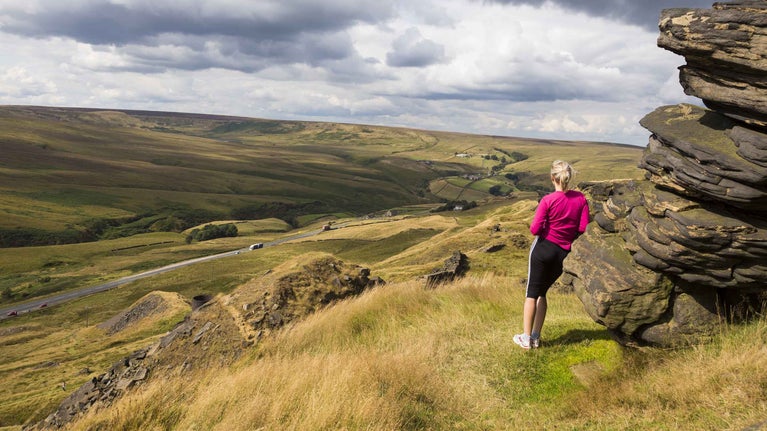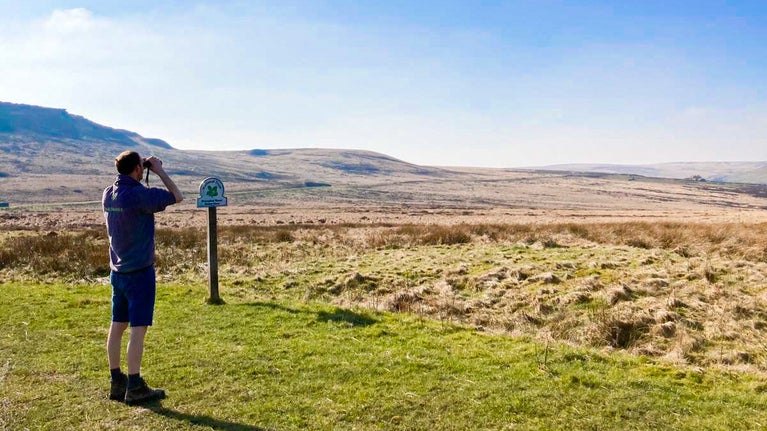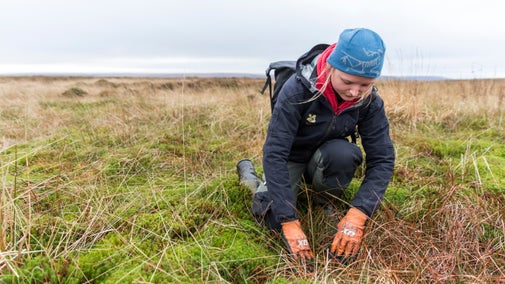
Discover more at Marsden Moor
Find out how to get to Marsden Moor, where to park, the things to see and do and more.

We’re working hard to protect Marsden Moor from future fires and there are many ways to do this. Discover some of the methods we use to protect the peatland.
If you see someone using a BBQ, campfire, or firework on moorland, call 999 and ask for fire. Use what3words to share your location. If you see smoke or suspect a fire, call 999 and ask for fire—don't assume it's already reported.
For suspicious activity or suspected arson, call 999 and ask for the police. Try to get a description of the person if you are able to. You can report any suspicious behaviour or concerns you might have after an incident to Crimestoppers. You can report anonymously online or call 0800 555 111
Many people ask why controlled burning is carried out on other upland sites but not on Marsden Moor. Marsden Moor is an area of deep peat, a Site of Special Scientific Interest, a Special Area of Conservation and a Special Protection Area, designated for its ground nesting bird populations and blanket bog habitat and holding over one million tons of carbon within the peat.
Uplands have been used and managed by people in different ways over thousands of years. Today, the climate and nature crises are the biggest challenges we face, and our uplands are a vital tool in reversing declines in nature and helping reduce the impact of climate change.
We are working to protect the peat on Marsden Moor estate, so the carbon stays in the ground. Healthy, waterlogged peatlands trap and store carbon. They are one of our greatest weapons in the fight against climate change, provide vital habitat for some of our most threatened plant and animal species, and preserve unique archaeological and palaeoecological records. The peat on Marsden Moor measures over 500cm in depth at some points, with most of the site classed as deep peat.
We work closely with partners including Natural England, academic institutions, DEFRA, the fire service and neighbouring landowners to manage vegetation and fuel load in line with best practice guidance and the latest scientific evidence.
Find out more about the techniques we use on Marsden Moor to help protect this captivating landscape.
All moorland fires are caused by people, through carelessness or intent, so our focus is on education and having a ranger presence on the ground during fire season. We work closely with the West Yorkshire Fire and Rescue Service, West Yorkshire Police, Kirklees Council,Holme Valley Mountain Rescue and neighbouring landowners to raise awareness of the dangers of moorland fires and the ban on barbecues and open fires on Marsden Moor. Find out more about our work to protect Marsden Moor from fires.

Find out how to get to Marsden Moor, where to park, the things to see and do and more.
Discover the work we’ve been doing to restore Marsden Moor following a series of devastating fires and learn fire-prevention tips to help us keep the moorland safe.

Learn how we're working with partners to protect uplands with woodland creation, peatland restoration and natural flood management to reduce fire risk.

Learn how National Trust rangers and volunteers are working to care for Marsden Moor by restoring peat, removing invasive species and minimising the risk of floods and fires.

Find out how you can apply to volunteer on Marsden Moor and the roles available, from helping the rangers to repair footpaths, to leading guided walks across the moorland.
